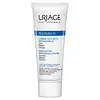What's inside
What's inside
 Key Ingredients
Key Ingredients

No key ingredients
 Benefits
Benefits

 Concerns
Concerns

 Ingredients Side-by-side
Ingredients Side-by-side

Octyldodecanol
EmollientPolyethylene
AbrasiveButylene Glycol Cocoate
EmulsifyingCera Alba
EmollientPersea Gratissima Oil
Skin ConditioningHydrogenated Castor Oil
EmollientBis-Diglyceryl Polyacyladipate-2
EmollientPentaerythrityl Tetrabehenate
EmollientButyrospermum Parkii Butter
Skin ConditioningHydrogenated Avocado Oil
Skin ConditioningPanthenyl Ethyl Ether
Synthetic Wax
AbrasiveBrassica Campestris Sterols
EmollientSqualane
EmollientTocopheryl Acetate
AntioxidantPolyquaternium-61
Skin ConditioningTocopherol
AntioxidantCitric Acid
BufferingOctyldodecanol, Polyethylene, Butylene Glycol Cocoate, Cera Alba, Persea Gratissima Oil, Hydrogenated Castor Oil, Bis-Diglyceryl Polyacyladipate-2, Pentaerythrityl Tetrabehenate, Butyrospermum Parkii Butter, Hydrogenated Avocado Oil, Panthenyl Ethyl Ether, Synthetic Wax, Brassica Campestris Sterols, Squalane, Tocopheryl Acetate, Polyquaternium-61, Tocopherol, Citric Acid
Water
Skin ConditioningHydrogenated Polydecene
EmollientOctyldodecanol
EmollientCetyl Dimethicone
EmollientStearyl Dimethicone
EmollientButylene Glycol
HumectantGlycerin
HumectantPvp
Emulsion StabilisingSqualane
EmollientMagnesium Sulfate
Brassica Campestris Sterols
EmollientDimethicone
EmollientChlorphenesin
AntimicrobialDiazolidinyl Urea
PreservativeO-Cymen-5-Ol
AntimicrobialPolyquaternium-51
Skin Conditioning
 Reviews
Reviews

Alternatives
Ingredients Explained
These ingredients are found in both products.
Ingredients higher up in an ingredient list are typically present in a larger amount.
Brassica Campestris Sterols isn't fungal acne safe.
Octyldodecanol is a fatty alcohol. It is primarily used to enhance the texture of products.
As an emulsifier, Octyldodecanol helps prevent the oils and waters from separating. It also prevents ingredients from creating foam when shaken.
Octyldodecanol is created by reducing fatty acid to an alcohol.
Due to its high molecular weight, it does not get absorbed into the skin.
Learn more about OctyldodecanolSqualane is an emollient that helps the skin hold onto moisture. It's an oily liquid that occurs naturally in certain types of fish and plant oils.
Because squalane boosts hydration in the skin, it also comes with plenty of benefits: it is an antioxidant and can help fight free radicals and skin damage. Squalane is also found to have a detoxifying effect when applied.
Squalane comes from squalene, which occurs naturally within the sebum of our skin. It is one of the oils our skin produces to keep itself hydrated. Squalane is the hydrogenated version of squalene and has a longer shelf life.
Research shows that squalane is non-irritating (even at 100% concentration).
In general, it's a fantastic ingredient. It does a great job at hydrating the skin, and it's suitable for those with sensitive skin.
The source of squalane may impact malassezia / fungal acne. This is because olive oil derived squalane can contain impurities such as fatty acids and plant waxes. Sugarcane derived squalane is recommended for anyone with malassezia concerns.
Is squalane vegan?
This depends on the source. Squalane can be derived from both plants and animals. Most squalane used in skincare comes from plants.
Please note: the source of squalane is only known if disclosed by the brand. We recommend reaching out to the brand if you have any questions about their squalane.
Read more about squalene with an "e".
Is squalane an oil?
Squalane is often called an oil, but it’s technically not; it’s a hydrocarbon, meaning it’s only made of carbon and hydrogen, unlike true oils which are triglycerides made of fatty acids and glycerol.
The term “oil-free” isn’t regulated, so companies can define it however they want. Some exclude all oils, while others just avoid mineral oil or comedogenic oils.
While some people avoid oils thinking they cause breakouts, the right kind of oil (or oil-like ingredient like squalane) can actually help balance and hydrate your skin. It’s worth testing out simple oils or squalane to see what works best for your skin.
Learn more about Squalane